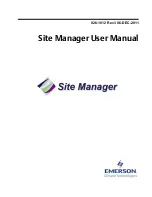
• The letter "L" means "last" in the Day of Week or Day of Month fields. For example, "
0 15 10 ? *
6L
" means the last Friday of every month at 10:15 am.
• The letter "W" means "weekday". So, if you created a Day of Month as "
15W
", this means the
weekday closest to the 15th of the month. Also, you can specify "
LW
", which means the last
weekday of the month.
• The pound character "#" identifies the "Nth" day of the month. For example, using "
6#3
" in the Day
of Week field is the third Friday of every month, "
2#1
" is the first Monday, and "
4#5
" is the fifth
Wednesday.
If the month does not have a fifth Wednesday, the task does not run.
The Threat Event Log
Use the Threat Event Log to quickly view and sort through events in the database. The log can be
purged only by age.
You can choose which columns are displayed in the sortable table. You can choose from a variety of
event data to use as columns.
Depending on which products you are managing, you can also take certain actions on the events.
Actions are available in the Actions menu at the bottom of the page.
Common event format
Most managed products now use a common event format. The fields of this format can be used as
columns in the Threat Event Log. These include:
•
Action Taken
— Action that was taken by the
product in response to the threat.
•
IPv4 Address
— IPv4 address of the system
which sent the event.
•
Agent GUID
— Unique identifier of the agent
that forwarded the event.
•
IPv6 Address
— IPv6 address of the system
which sent the event.
•
DAT Version
— DAT version on the system that
sent the event.
•
MAC Address
— MAC address of the system
which sent the event.
•
Detecting Product Host Name
— Name of the
system hosting the detecting product.
•
Network Protocol
— Threat target protocol for
network-homed threat classes.
•
Detecting Product ID
— ID of the detecting product.
•
Port Number
— Threat target port for
network-homed threat classes.
•
Detecting Product IPv4 Address
— IPv4 address of
the system hosting the detecting product (if
applicable).
•
Process Name
— Target process name (if
applicable).
•
Detecting Product IPv6 Address
— IPv6 address of
the system hosting the detecting product (if
applicable).
•
Server ID
— Server ID which sent the event.
•
Detecting Product MAC Address
— MAC address of
the system hosting the detecting product.
•
Threat Name
— Name of the threat.
•
Detecting Product Name
— Name of the detecting
managed product.
•
Threat Source Host Name
— System name from
which the threat originated.
•
Detecting Product Version
— Version number of
the detecting product.
•
Threat Source IPv4 Address
— IPv4 address of
the system from which the threat
originated.
11
Other important server information
ePolicy Orchestrator Log Files
116
McAfee
®
ePolicy Orchestrator
®
4.6.0 Software Product Guide
Содержание EPOCDE-AA-BA - ePolicy Orchestrator - PC
Страница 1: ...Product Guide McAfee ePolicy Orchestrator 4 6 0 Software...
Страница 14: ......
Страница 20: ......
Страница 24: ......
Страница 26: ......
Страница 42: ......
Страница 46: ......
Страница 76: ......
Страница 100: ......
Страница 108: ......
Страница 120: ......
Страница 158: ......
Страница 162: ......
Страница 210: ......
Страница 228: ......
Страница 238: ......
Страница 264: ......
Страница 288: ......
Страница 310: ......
Страница 314: ......
Страница 328: ...00...
















































